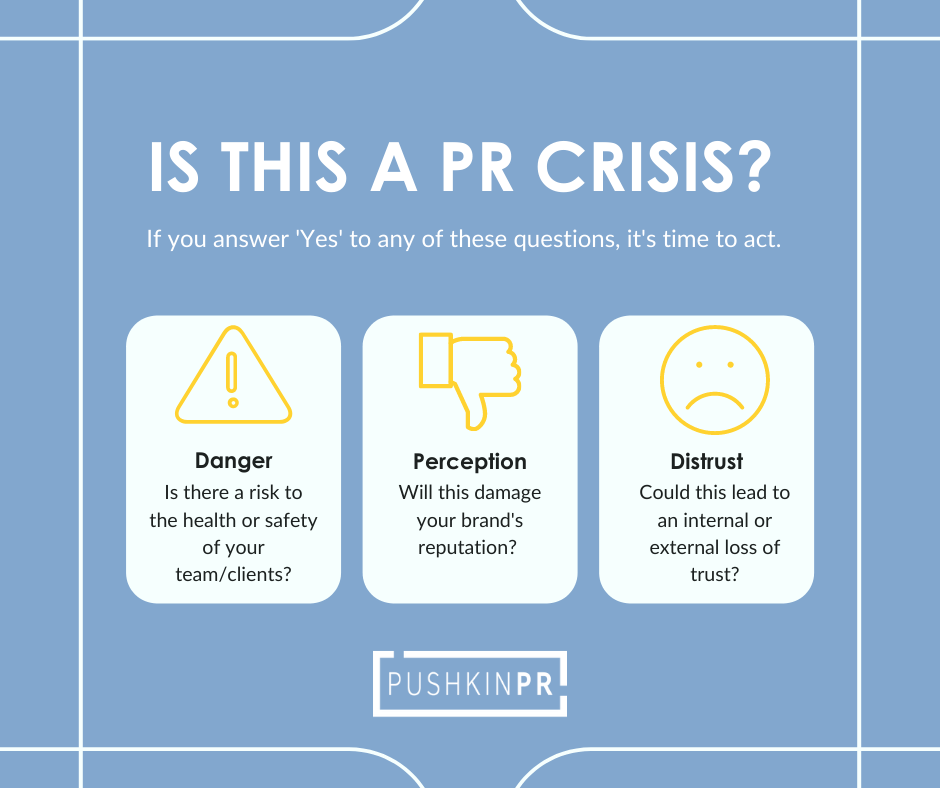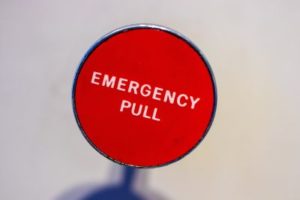Identifying a Public Relations Crisis
Every brand is at risk of facing a public relations crisis. In the age of cancel culture and the 24/7 news cycle, we’d even go as far as to say that for today’s brands facing a PR crisis isn’t a matter of ‘if’, it’s a matter of when.
Many organizations find themselves in emergency situations as a result of internal problems or corruption. However, even when organizations are fortunate to have visionary leaders, a solid communications team and a great product or service, external factors can quickly create a crisis situation.
Whether a problem originates internally or externally, there is one commonality: you must quickly determine if you need to respond and if so, what the appropriate response is. When faced with an angry public armed with tools like Twitter and a drive to see brands held accountable, choosing not to respond to criticism or controversy is a poor decision in most situations.
Before we dive into saving your brand’s reputation, let’s back up for a minute and cover exactly what constitutes a public relations crisis.
What is a PR crisis?
There are many different types of crisis situations that can cause damage to your brand. Some may be foreseen while others may give you no warning.
A few sample situations that are PR crises (or can quickly turn into a crisis) are:
- A fire or accident that leaves your brand unable to provide a vital service
- A lawsuit against your company or an executive
- A lack of regulatory compliance that comes to light
- The injury or death of an employee or client
- Worker dissatisfaction that leads to a strike
- A cyberattack leads to a leak of private or sensitive data
- Your CEO or another executive makes racist, abusive or other unacceptable comments
 To determine if the situation you are facing is a PR crisis ask yourself these questions:
To determine if the situation you are facing is a PR crisis ask yourself these questions:
- Could this situation damage the reputation of our organization?
- Could this situation cause either an external or internal loss of trust?
- Is there any risk to the health, lives or safety of staff, clients, patients, providers, or other stakeholders?
If you answered ‘Yes’ to one or more of these questions, you have a crisis situation on your hands.
So now what? Do you need to respond or can you keep things quiet and hope it goes away?
You can determine if you need to respond by asking yourself these questions:
- Would reasonable people expect a responsible organization to respond?
- Would silence be seen as not caring or a sign of guilt?
- Are others already framing the story?
If the answer to any of these questions is yes, you have a problem and the next question to ask is not “should we respond?” but “what is the appropriate response?”
Formulating your response
There are tons of variables that could affect your response to a crisis, but what you do and say in the first minutes of the response sets the course and the tone of everything that happens going forward.
Typically, in a crisis an organization can face a range of communication challenges:
- Lack of information and lots of internal confusion
- Escalating flow of events
- Loss of control
- Intense public scrutiny
- Intensifying media attention
Sounds serious, right? That’s why in the midst of a crisis there is no time to decide that you need a plan. You must decide to act and respond quickly. An hour after the negative story airs is not the time to sound the alarm. The time to call in the troops is when they are ready to execute a well-crafted crisis communications plan that’s been practiced, tested and updated on a semi-annual basis. 
While no plan can completely anticipate each and every scenario, your crisis communications plan can outline the core principles that can help your team minimize the chaos and loss of trust that so many organizations find so challenging.
When our team develops crisis communications plans for clients, we use a set of basic principles to provide a foundation for those plans.
Core principles for crisis communications
If you find yourself in an emergency situation and need to make a public response without an established plan in place, you may feel overwhelmed.
Take a deep breath and then follow these best practices:
- Manage the message from the top: Establish a command structure and follow the chain of command. This helps to control the flow of communication, which is critical during a crisis. Your organization should speak with one voice. Anyone who is not authorized to comment should direct questions from the media or the public to the designated spokesperson.
- Set the optimal tone: Be in control, proactive, transparent, compassionate and truthful. Any official statements or other messaging should use a voice that conveys trust, calm and compassion.
- Stick to the facts: Fact gathering and verification should precede any communication. Any official statements should employ only verified facts. Never speculate.
- Keep stakeholders in the loop: You don’t want stakeholders hearing about the situation on the evening news. Your stakeholder communication should be direct and immediate. What are their needs? What are their primary concerns and priorities? How will their reputation be affected by your crisis?
The bottom line is this: If a reasonable person would expect a responsible organization to respond quickly, truthfully, and compassionately, then be ready to do that or be willing to face a loss of trust.
As Warren Buffet famously said, “It takes 20 years to build a reputation and five minutes to ruin it.”
Don’t wait until the hounds are at the door. If you have questions or need help proactively (or reactively) putting together a crisis communications plan, let us know. We will be happy to help you make sure you are ready before the barn door opens, not after the horses have left the stall.
